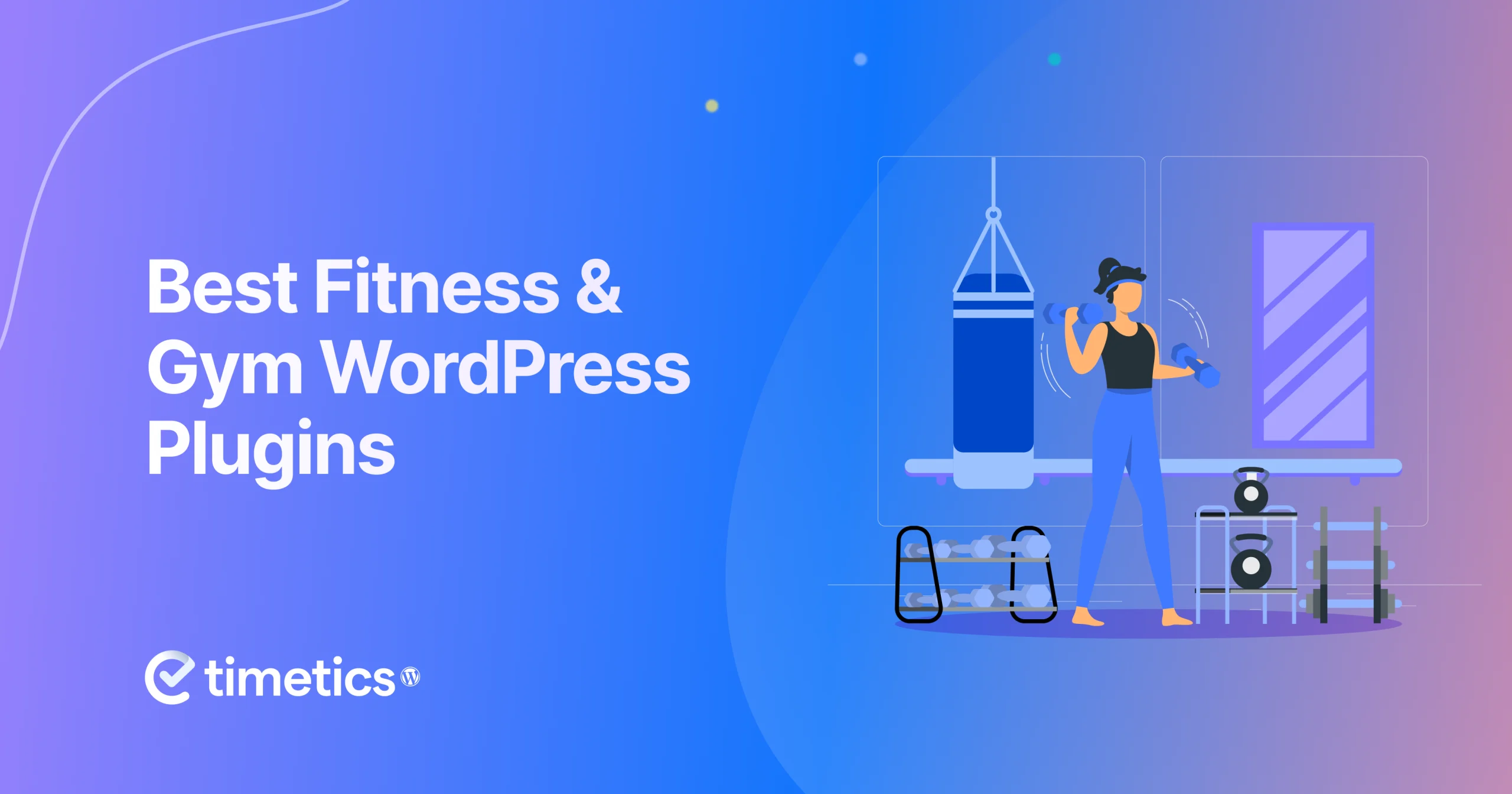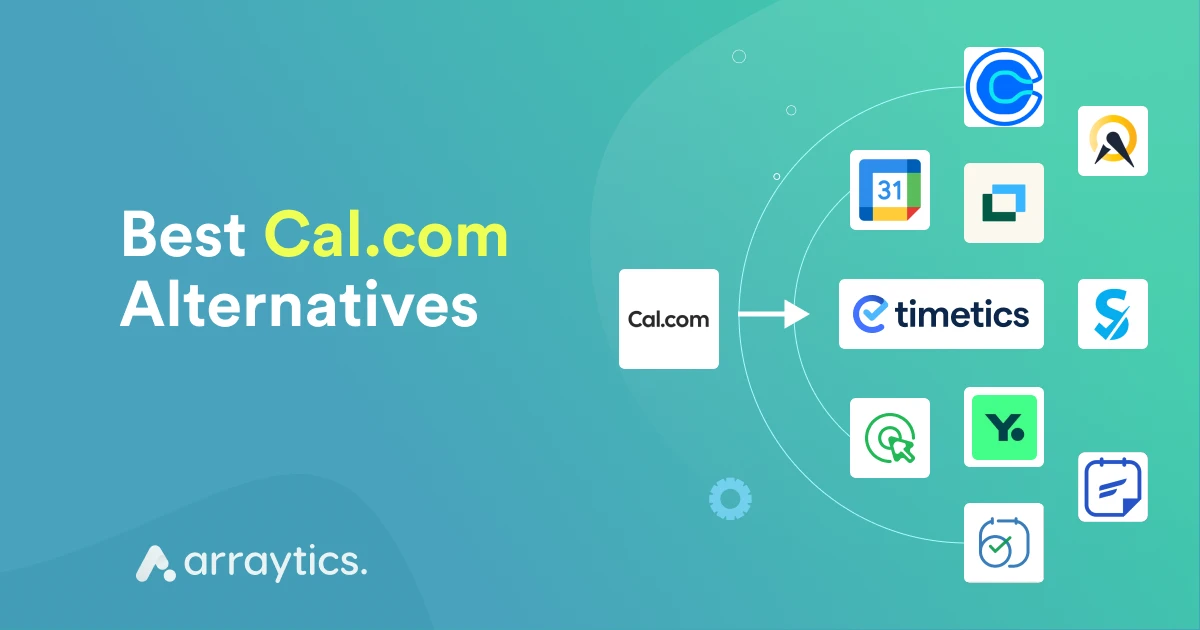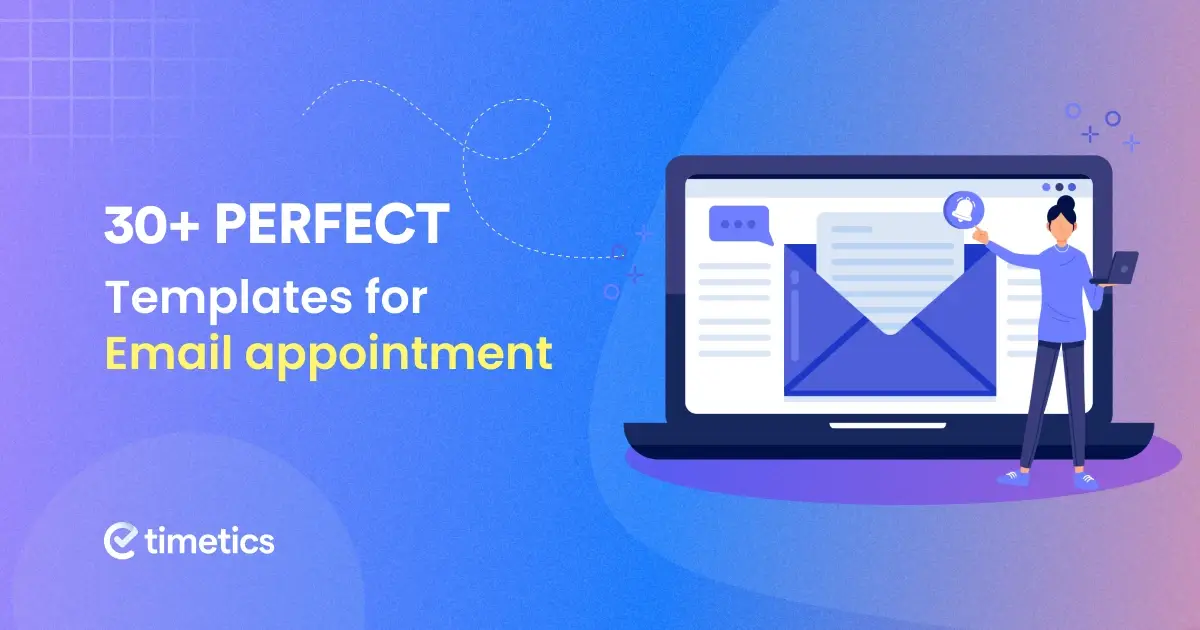How to Build a Booking Marketing Funnel That Actually Works
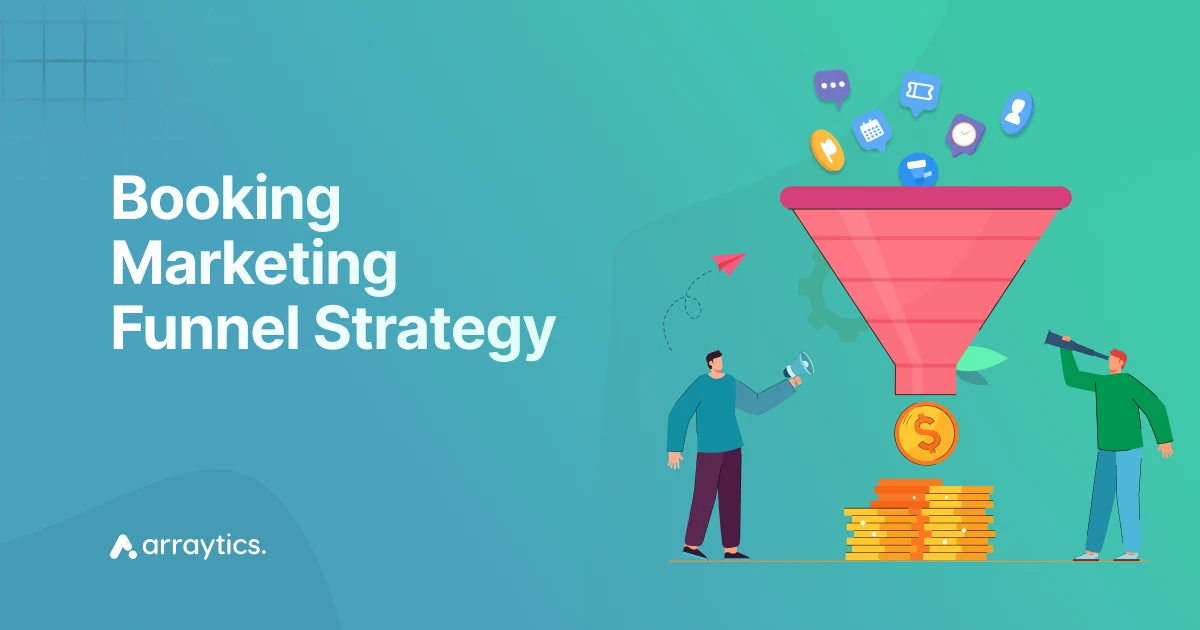
Have you ever noticed people visit your website, check your services, and then leave without booking?
If you run a service-based business, you might face this situation and know how challenging it can be to turn casual website visitors into clients.
But if you want to get out of this situation and secure more bookings, you must follow a marketing funnel strategy.
With a proper booking marketing funnel, you can attract the right audience, build trust, and turn most of your visitors into paying clients.
Keep reading… today, we’ll guide you on how to build a booking marketing funnel that actually works.
-What a booking marketing funnel is and why it matters
-The 5 stages of a high-converting funnel
-Practical ways to apply each stage to your business
Let’s get started!
What does a marketing funnel mean in a booking system?
A marketing funnel is a structured process that guides you to stay on the plan or the core strategy. The result? It will help you attract more visitors and convert them into paying customers.
It starts with creating awareness of your services, builds trust and interest along the way, and ends with a confirmed booking.
Unlike a general sales funnel, a booking funnel is specifically developed for service-based businesses — focusing on appointments, reservations, or consultations instead of one-time product sales.
In booking marketing, the funnel works in the same way but focuses on guiding people to make a booking.
- At the top, the booking funnel attracts visitors who are just discovering the services, then builds their interest with useful content, offers, or reviews.
- Next, it helps potential customers consider and trust the business by providing clear details, transparent pricing, and easy booking options.
- Finally, the funnel guides them to confirm their booking and encourages repeat engagement through follow-ups and loyalty offers.
Overall, a booking marketing funnel helps you create a smooth journey—from awareness to confirmed bookings—so fewer visitors drop off and more of them turn into regular clients.
📚 Related reading: The Best Ways to Confirm a Meeting: From Formal/Informal Emails to Quick Texts 👉 Read more
How can a marketing funnel boost booking growth?
A well-designed booking funnel is more than just an idea. It brings real, measurable results that help your business grow. When visitors feel confident they are in the right place, they are more likely to stay, look at your services, and move toward booking.
Here are a few key ways it can make a difference:
- Build trust with your customers in your services: A funnel helps you clearly explain your services and demonstrate your expertise, which builds trust with potential clients.
- Reduce bounce rate and maximize booking rate: By guiding visitors step by step and making the process simple, a funnel keeps potential clients engaged and encourages them to complete their booking.
- Increase repeat bookings and customer loyalty: The funnel does not stop after the first booking. A smart booking funnel uses follow-up and retention tactics to turn one-time clients into regular customers.
- Saves money on marketing: It’s more cost-effective to retain a customer than to acquire a new one. A funnel keeps existing clients engaged, which means you spend less on ads while earning more from repeat business.
📚 Related reading: How AI Search Is Killing Your Traffic(And How to Fight Back :10 practical strategies) 👉 Read more
The 5 stages of a high-converting booking marketing funnel
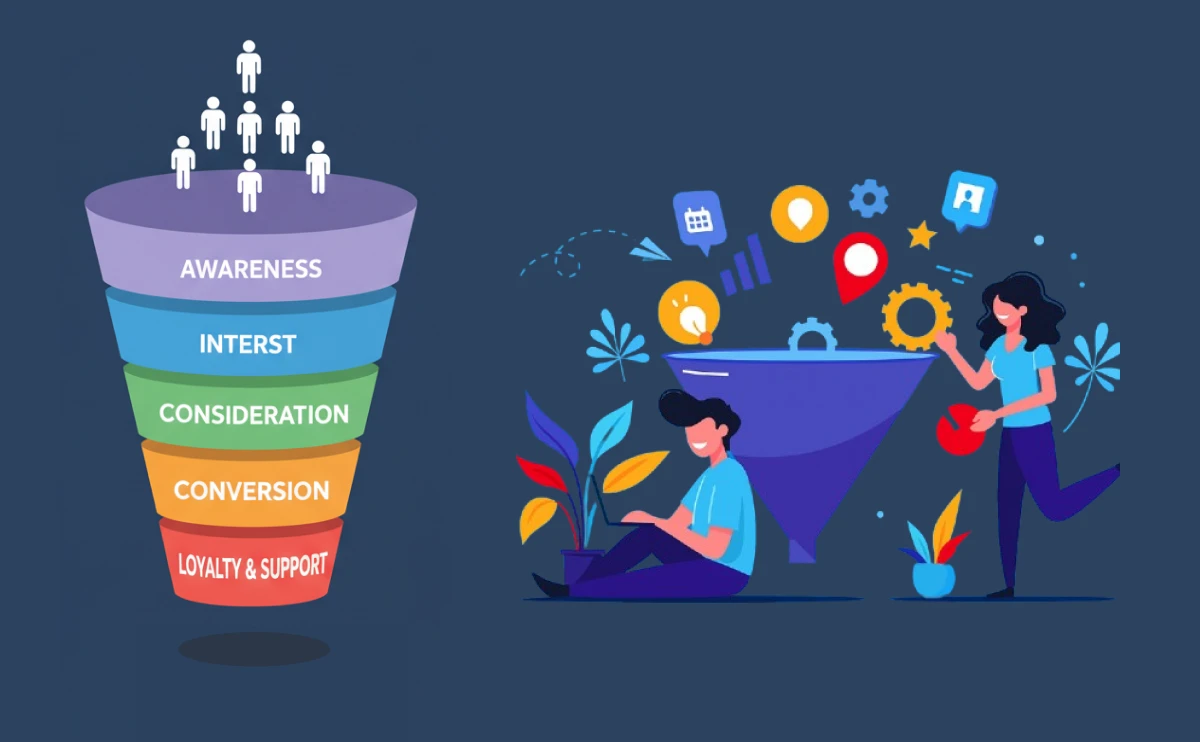
We do market research, and our strategies make the booking funnel into five main stages to clearly understand for everyone: Awareness, Interest, Consideration, Conversion, and Loyalty & Retention. Each stage matches a different customer mindset and needs its own approach to keep people engaged.
Below, we’ll look at each stage and highlight what to do and what to avoid to make your booking marketing funnel work better.
Stage 1: Awareness – Attract the right people to discover your services
At the awareness stage, your funnel journey starts. At the Awareness stage, potential customers are just discovering that your business exists. Your customer might not be ready to book anything yet – in fact, they could simply be looking for information or solutions to a problem.
Your goal here is to cast the net to attract the right audience and make a great first impression.
- Focus on broad visibility to your target audience: Ensure your business can be found where your ideal clients hang out. This means leveraging channels like search engines, social media, online ads, and content marketing to put your name out there.
- Communicate your value clearly: When someone clicks your ad or lands on your website, make it immediately clear who you are and what you offer.
- Avoid pushing for a sale too soon or attracting the wrong crowd: Don’t bombard new visitors with “Book now! Limited slots!” pop-ups on their first visit; that can be a turn-off.
- Focus on informing and engaging rather than selling.
📚 Related reading: How to choose the Best WordPress Booking Plugin for Service Businesses 👉 Read more
Stage 2: Interest – Engage prospects and spark curiosity about your offer
Once a prospect becomes aware of your business, the next step is to capture their Interest.
Here, the goal keep curious visitors engaged so they learn more and start seeing real value in what you offer. This is where you nurture them and shape initial interest into a genuine desire for your service.
- Offer deeper engagement and valuable content: At the interest stage, prospective clients are starting to research and compare options, so this is your chance to shine by providing in-depth information.
You can nurture them with helpful, educational, or inspiring content that relates to your services.
For example, you might publish detailed guides or videos (like “10 Tips for First-Time Yoga Students” if you’re a yoga instructor, or “How to Prepare for Your First Dental Visit” if you run a clinic).
Tips: Host a free webinar or workshop to share your expertise. This keeps people engaged while showing them you understand their needs.”
- Suggest a small offer for the next step: To move an interested prospect closer to conversion, allow them to take a minor action that indicates interest and enable you to follow up.
For example, invite them to join your email newsletter for a special incentive (like a first-time booking discount or a free resource). “Sign up for 10% off your first appointment” is a low-friction offer that many curious prospects will accept.
Once they opt in, you now have a direct line of communication to nurture them further.
📚 Related reading: How a Booking System Reduces No-Shows and Saves You Time 👉 Read more
Stage 3: Consideration (Evaluation) – Help customers choose you with confidence
In this Consideration stage, your customer/client is seriously thinking about booking a service like yours. They are likely comparing your offering with others, evaluating details, and deciding whom to trust with their business.
At this point, they’re essentially asking, “Is this the right choice for me?” Your funnel’s job is to emphatically answer “Yes!” by providing all the information and reassurance needed for them to choose you with confidence.
- Provide detailed information and address all key questions: Make sure that a potential client can easily find everything they need to know before booking. This includes clear descriptions of your services, pricing, availability, how the booking process works, what to expect at the appointment, cancellation policies, and so on.
Note: Many people hesitate at the consideration stage. If they can’t find your pricing or are unsure what exactly is included in a service, that uncertainty can derail the booking.
- Show social proof and what makes you the best option: At this stage, trust signals are crucial. Highlight testimonials, reviews, case studies, or before-and-after photos from happy clients to demonstrate that you deliver on your promises.
- Avoid leaving any doubts or making people second-guess: Don’t hide prices – being clear about cost builds trust. Also, make sure your privacy policy (like how to reschedule or get a refund) is easy to find and fair.
Stage 4: Conversion – Turn visitors into paying customers (Booking/Payment)
Conversion is the point where interest turns into action. This is when a potential client decides to book your service and, in many cases, make a payment.
Your role here is to remove every obstacle that could cause hesitation or drop-offs.
Think of this stage like the checkout process in eCommerce: the smoother the flow, the higher the completion rate.
Even small barriers such as extra clicks, confusing forms, or limited payment options can make people abandon their booking.
Here’s how to optimize the conversion stage:
- Keep the booking flow short and clear
- Offer multiple payment options
- Make it mobile-friendly
- Add trust signals at checkout: Display key elements like secure payment badges, refund or reschedule policies, and quick customer support options. These details reduce last-minute doubts.
Tips: At the conversion stage, focus on making the booking process simple and reliable. The easier it feels, the more visitors you’ll turn into paying clients.”
Stage 5: Loyalty & Retention – Turn first-time clients into repeat customers
The final stage, Loyalty & Retention, is about delivering a great experience and continuing engagement so that this client comes back again and ideally becomes an advocate who refers others.
It’s much more cost-effective to retain an existing client than to acquire a new one, so this stage is crucial for maximizing lifetime value.
- Follow up and delight the customer after the booking: A simple follow-up can go a long way. After the services/appointment, send a thank-you email: thank them for choosing your business and perhaps include something of value – a discount code for their next visit, or a request for feedback/review.
- Offer loyalty rewards and stay connected: Encourage repeat customers by creating a loyalty program or giving exclusive perks to clients who return.
This could be as simple as “Book 5 sessions, get the 6th free,” or a points system, or even just occasional personalized offers (“We haven’t seen you in a while – here’s 15% off your next appointment”).
- Avoid neglecting your clients post-booking: Do not ignore clients after their services/appointments or assume they’ll automatically return.
When a customer feels that they don’t get what they need or communicate somewhere where there is no response, they leave and search around for another service.
Continue to provide excellent service and communication even between bookings. Happy customers will not only return, but they may also tell others about your business, which can help bring in new customers.
📚 Related reading: 10 Best WordPress Booking Plugins in 2025 👉 Read more
Conclusion: Win more clients with a smart booking funnel strategy
Building a booking marketing funnel that actually works may take some effort, but the payoff is well worth it. When you have a proper funnel in place, you’re creating a consistent, trust-building journey for your audience. This means more of your website visitors will convert into bookings, fewer potential clients will slip through the cracks, and more first-time clients will stick with you for the long run.
Start applying these principles today, and you’ll be on your way to winning more clients and keeping them happy for the long term. Happy booking!
🎁 Bonus for You
You’ve learned the funnel strategy. Now let’s make it real.
Booktics is the all-in-one WordPress booking plugin built for service businesses. From first-time visitors to repeat clients, Booktics helps you manage the full journey:
- Easy booking flow for your clients
- Flexible service and staff management
- Payment, reminders, and loyalty features in one place
Frequently asked questions (FAQs)
Q1. What’s the difference between a sales funnel and a booking funnel?
A sales funnel is designed to sell a product or subscription, while a booking funnel is built to secure bookings/appointments. It guides people through discovery, trust-building, and decision-making until they confirm a booking. For service businesses like salons, clinics, or trainers, this approach ensures fewer drop-offs and more scheduled clients.
Q2. How do I track if my booking funnel is working?
Start by measuring three things:
-How many people visit your site or landing page (awareness).
-How many move on to view your services or booking form (consideration).
-How many actually complete a booking (conversion).
Tools like Google Analytics or booking plugins with built-in reports can show where people drop off so you know what to fix.
Q3. What tools are best for creating a booking funnel?
The essentials are:
-A website to present your services clearly.
-An email/CRM system to nurture leads with reminders and updates.
-A scheduling tool or plugin to make booking simple.
For WordPress users, Booktics booking plugin combines these booking features into one easy-to-manage system, including confirmations, payments, and client reminders.
Q4. How long until I see real results?
Most businesses see small wins in a few weeks (like more form submissions or calls). Significant growth usually shows up in 1–3 months once you’ve tested, tracked, and refined your funnel.
Q5. How do I reduce no-shows once people book?
Automated confirmations and reminders are the key. Send clients an instant confirmation email with all details and follow up with SMS or email reminders before the appointment. Offering easy reschedule options also prevents last-minute cancellations.

